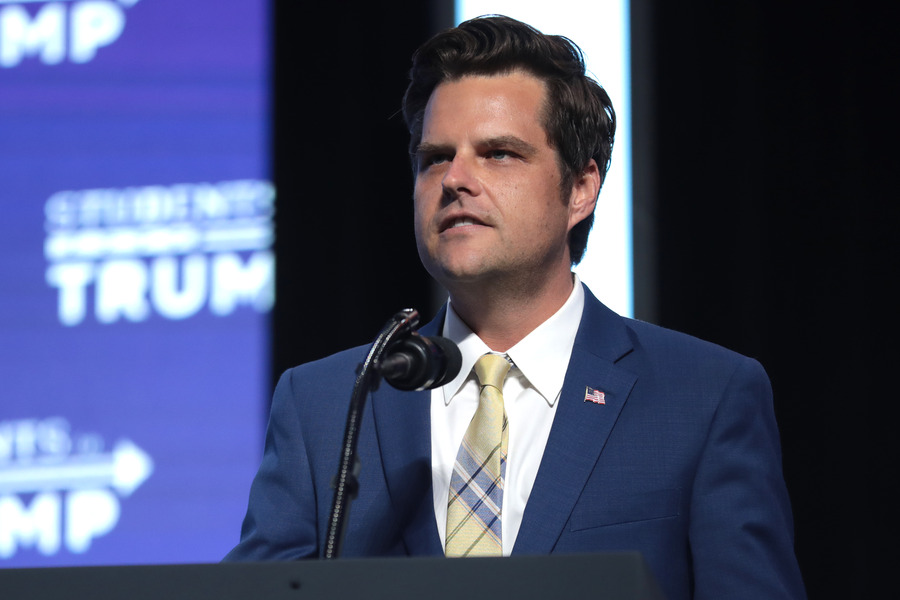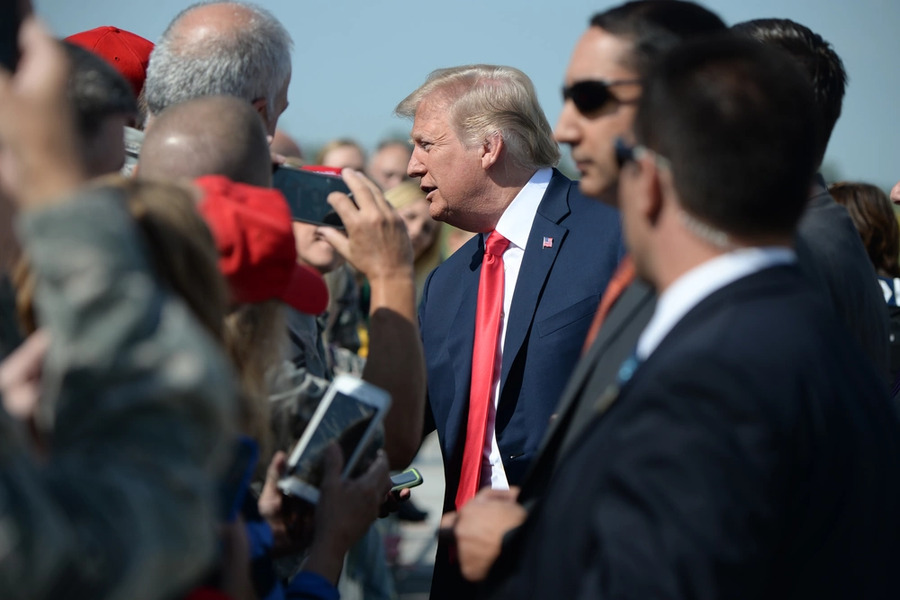About that ‘Winter White House’ Post ...
A couple of weeks ago, The Hill reported on the latest legal endeavour of our little Freedom of Information Act (FOIA) project: a new lawsuit we’ve filed with help from our friends at Georgetown Law’s Institute for Constitutional Advocacy and Protection (ICAP) over a long-overdue FOIA request one of us submitted to the State Department last May.
Published by The Lawfare Institute
in Cooperation With

A couple of weeks ago, The Hill reported on the latest legal endeavour of our little Freedom of Information Act (FOIA) project: a new lawsuit we’ve filed with help from our friends at Georgetown Law’s Institute for Constitutional Advocacy and Protection (ICAP) over a long-overdue FOIA request one of us submitted to the State Department last May. The request focused on the notorious “Winter White House” post that appeared to promote President Trump’s Mar-a-Lago resort and country club on several State Department-affiliated websites back in April. As President Trump has not divested himself from his financial interest in Mar-a-Lago, this post raised concerns that the president or someone in his administration was using the State Department as a platform for advancing the president’s financial interests, in contravention of federal ethics guidelines and most standards of decency. Ben submitted the FOIA request in an effort to find out where the idea had come from and how the resulting post had made its way onto State Department websites.
As it turns out, he wasn’t the only one. Shortly after The Hill ran its article, the diligent folks at American Oversight reached out to inform us that they had received responsive documents to a similar FOIA request back in December. We’re not sure why the State Department moved so much faster on their request than on ours and, to be honest, we were unaware of their request and response. But eager to finally get an answer to our query, we dug into the documents they’d received.
The story that emerges is different from what many, including ourselves, had feared. While none of the documents clearly indicate where the idea for the post originated, they do lay out the process through which it was generated in painstaking detail. A junior State Department official within the Bureau of International Information Programs (IIP) appears to have begun generating the article from a list of bullets on or about Mar. 24. He and his colleagues edited it over the course of several weeks, adjusting it to reflect ongoing developments, including President Trump’s April 2017 summit with Chinese President Xi Jinping. They posted a final version on ShareAmerica—an IIP-run public diplomacy website—around April 4, at which point it was translated into several foreign languages for international audiences and made available to other websites and social media platforms affiliated with the State Department, some of whom reposted it. Once the post proved controversial, the same people pulled it down and replaced it with an apologetic statement, which was also translated and disseminated through the same ShareAmerica platform.
All of the IIP officials involved in this process appear to have been career civil servants, and there are no signs that they were acting under any pressure or instructions from others. Indeed, in internal correspondence, the head of the office that generated the post described its origins as follows: “The fact that the president had hosted the Japanese prime minister at Mar-a-Lago in February and would soon host the president of China (in early April) at Mar-a-Lago prompted a writer to write a simple history of the remarkable site—it is not unusual to highlight the places world leaders visit in public diplomacy materials.” This is consistent with the talking points that State Department officials eventually generated on the incident, which state: “This article was researched and written by staff members of the IIP bureau, and provided at no cost to the State Department’s diplomatic posts overseas.”
In other words, nothing in the responsive documents shows that the incident was anything but what the State Department described it to be at the time: an unfortunate, but ultimately innocent, series of oversights.
Note that this does not mean that the original public concerns over the post were misplaced. Whether done at the behest of someone in the Trump administration or not, the Mar-a-Lago post raises genuine ethics concerns that, absent the controversy, might have gone unaddressed. Moreover, the public response has presumably increased relevant officials’ awareness of these ethical concerns and encouraged them to install appropriate safeguards. But in the end, the story that emerges is not one of President Trump using his newfound authority for personal gain, as some had feared. Instead, it is a more nuanced parable about the unexpected pitfalls that hardworking and well-meaning civil servants can encounter when they suddenly find themselves working for a president who refuses to abide by the same rules and standards of his predecessors—and how the standard operating procedures of federal government are not always well-suited to identifying the new conflicts of interest and moral quandaries that such a situation can create.
As for where this leaves our lawsuit, we intend to proceed as planned. Our FOIA request is somewhat broader than the one filed by American Oversight, and thus may yield additional responsive documents. And, as noted above, while the responsive records include after-the-fact explanations, we still have no contemporaneous records showing where the idea for the post originated. Regardless, we look forward to hearing from the State Department soon to discuss a way forward, and will be sure to keep Lawfare readers in the loop on any further developments.
Below is a copy of the complaint in our recent lawsuit; our original FOIA request is included within it as Tab A:





